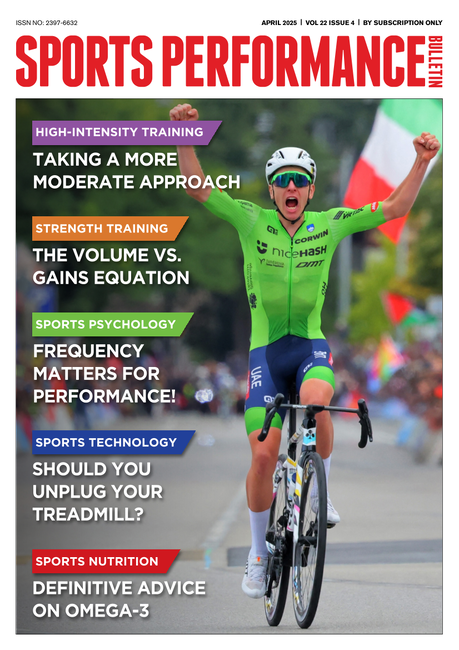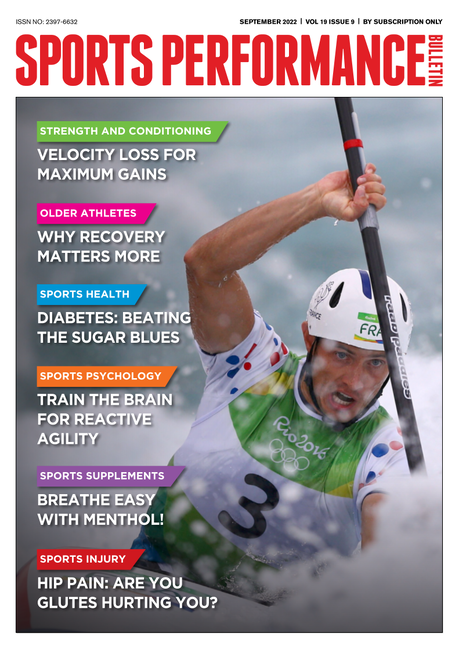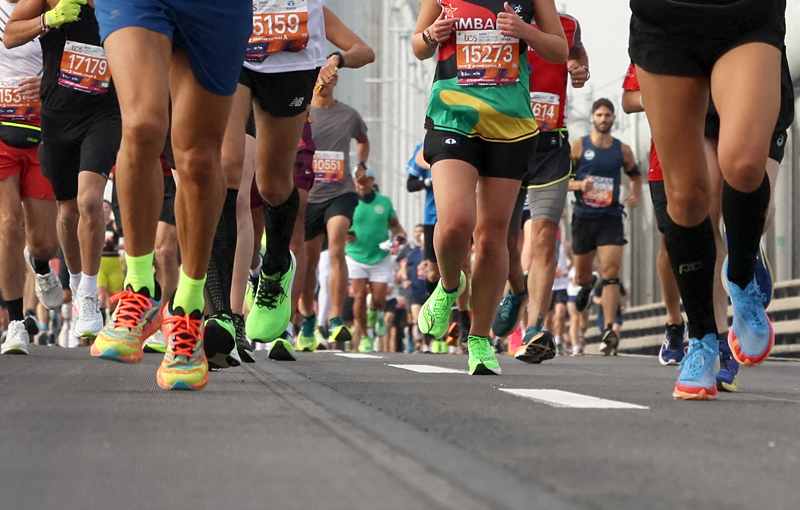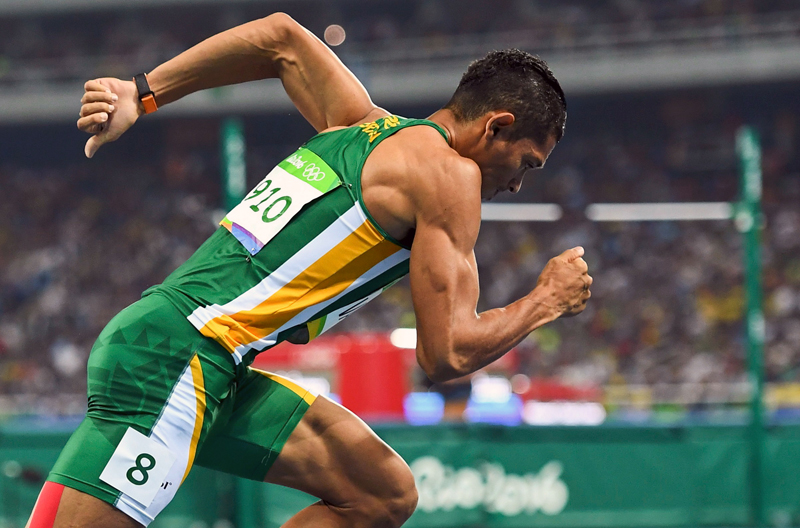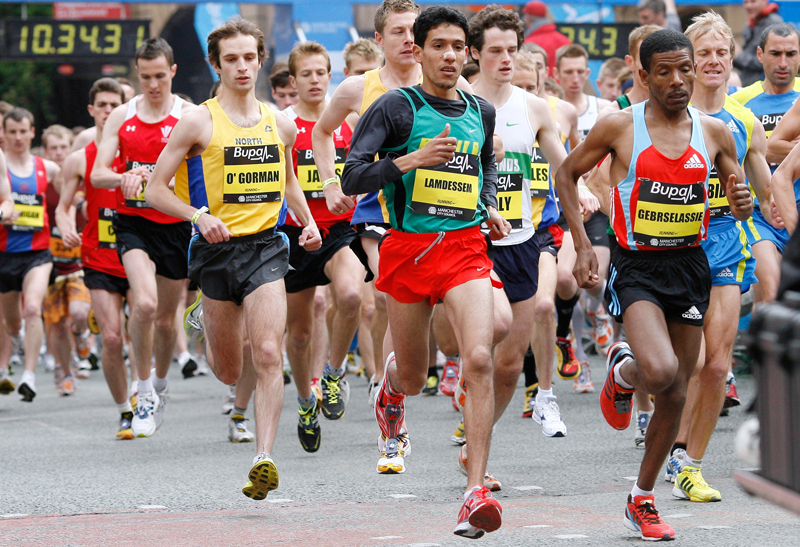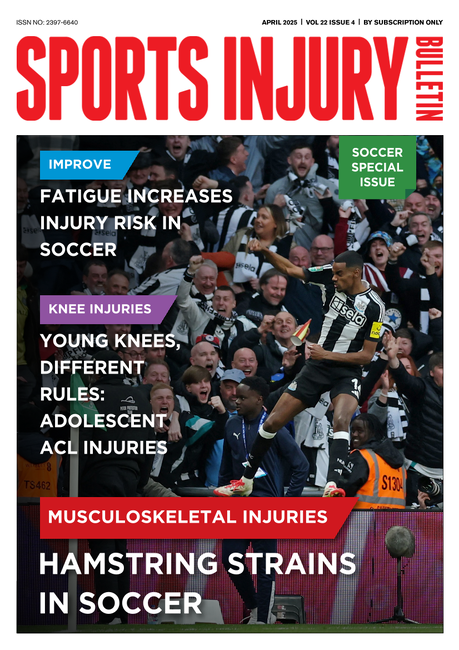Deep water running
When your training should land you in deep water
At its simplest deep water running (DWR), or 'aquajogging', mimics its land-based equivalent, except that it is performed in water deep enough to stop your feet making contact with the bottom of the pool. In recent years this technique has become increasingly popular with coaches and practitioners from a variety of sporting disciplines (1). As well as being a rehabilitative method that allows participants to avoid the negative effects of detraining, it can also be used as an adjunct to normal training, reducing the risk of injury because of the much more 'forgiving' environment that water provides. However, despite its current popularity, DWR is often poorly understood and incorrectly used.In addition to these purely mechanical issues, the deep water runner needs to consider how best to apply power throughout the range of motion. Bobbing and moving backwards are two obvious markers of improper application: bobbing occurs if the application of power is mostly vertical and/or performed only with the driving leg, while backward movement is a sign that power is being applied only during the recovery phase, with little applied to the driving leg.
Initially, the resistive properties of the water may hinder running mechanics and you will need a lot of feedback. But is this any different from learning any new complex skill? With practice, there should eventually be little difference between your land and water technique.
Flotation devices and tethers
I have used two kinds of flotation devices with my athletes - 'belts' and 'lifejackets'. Both of these are designed to suspend the deep water runner in a vertical, head-above-water position and both have their pros and cons.
The great advantage of flotation devices is that they enable performers to perfect their running style and control the intensity of the activity; but they do need to be worn tightly, which some people feel restricts their breathing.
It is possible to perform DWR without a flotation device (known as free DWR), although in this situation just staying afloat becomes the primary concern. Also, it takes much more strength and strength endurance to deal with the increased amount of stress placed on the core and legs to keep the body stable and upright. These difficulties can, of course, provide further training stimulus. However, I would always advocate that athletes become fully proficient with flotation-assisted DWR before attempting a 'free' session.
Another piece of useful equipment is a tether, which can be attached to the flotation device (or the runner) to anchor him to the pool side. This provides increased resistance, helps the athlete to maintain a near-vertical posture, allows for monitoring of the activity and maximises pool space. However, in my experience, athletes do not like this 'hamster' approach and prefer to have the freedom of the pool.
Research to date suggests that DWR provides suitable training for maintaining aerobic performance when used as a substitute for normal land-based running. In one study 11 competitive runners were reported to have maintained both their VO2max and their 5k run time following four weeks of DWR training. Another research team found VO2max and ventilatory threshold responses unchanged following a six week DWR programme (2). Both groups of investigators also reported that DWR had effectively sustained running economy. Unfortunately, no research has been conducted into the effects of DWR training on more power-related performance indicators, such as sprinting and jumping, and this may be an area for future research.
Does DWR boost performance?
However, actual improvement in performance indicators have been demonstrated only with young runners and untrained subjects (3,4,5). Consequently, I prescribe DWR to elite performers not as an additional training stimulus, but only for rehabilitation or injury prevention purposes.
Correct training prescription and monitoring is essential with any mode of activity. Heart rate monitoring is popular with land based activity, but its use with DWR is contentious. Studies have shown that hydrostatic pressure exerted on the chest in deep water produces different circulatory responses than those associated with land-based running (1, 6). The increased pressure on the chest wall causes a redistribution of blood volume away from the extremities, with greater amounts of blood in the thorax region (7). This central shift in blood volume leads to an increase in stroke volume and a compensatory reduction in heart rate. Consequently, HR responses have been reported to be approximately 10-12 beats lower than those achieved during land based running at matched sub-maximal intensities (8, 9).
However, other investigators have observed no differences in HR between exercise modes (10, 11). Factors such as altered running technique and differences in water temperature are thought to be the cause of this disparity between research findings.
Wilder and Brennan (1) prescribed the use of an auditory metronome as an external cue to regulate DWR exercise, by recording heart rate responses to varying levels of cadence. This allowed them to design DWR sessions using timed intervals with anticipated physiological responses for particular cadence levels. However, this type of training prescription is clearly specific to the individual.
I feel that the key factors influencing DWR prescription are as follows:
1. Familiarity;
2. The accuracy with which a performer's water technique reflects his land based running style;
3. The athlete's aerobic development.
At sub-maximal intensities, research shows that experienced performers achieve similar rate of perceived exertion (RPE) values to those associated with treadmill running (10), although this does not appear to apply to 'unfit' or inexperienced DWR performers(8). Consequently, I prescribe active recovery DWR sessions only when I am completely satisfied that the athlete is able to replicate his or her land-based running style, so making HR monitoring a viable method of monitoring the exercise. The sessions I prescribe mirror land based workouts (2) with the performers instructed to work at the upper end of their HR intensity zones.
Whatever prescription is used, it is worth remembering that, as with any 'new' training stimulus, the risk of delayed onset muscle soreness (DOMS) is increased, so the prescription needs to be gradual.
Why recovery is shorter
Recoveries between DWR sessions can be shorter than for land-based running. My own empirical studies show that once athletes are proficient in the technique and the stimulus has been progressive, they can cope with greater intensities and longer durations yet experience fatigue levels associated with much less intense land-based sessions. This must be due primarily to the lack of impact and the consequent reduced stress on the body. Other contributory factors may be the reduced eccentric contraction in the 'landing' phase of the running stride (remember that the knees are lower than
in normal running) and increased thermal dispersion in the surrounding water.
As mentioned above, the use of flotation devices may give deep water runners a sense that their breathing is restricted; this feeling can be amplified by water pressure, causing some performers to breathe only with the upper portion of their lungs. As performers become familiar with DWR techniques, they need encouragement from their trainers to increase use of the lower portion of their lungs, or they may become short of breath.
Returning to 'normal' training from a total DWR programme required a careful approach. Some athletes feel sluggish and slow when they return to land, a problem which can be overcome to some extent by incorporating more advanced techniques into pool sessions during the final phases of pool-based rehab. These include:
1. 'High tempo' - moving as fast as possible, with short strides landing behind the body's centre of gravity and a sprinting-style arm action;
2. 'Bum flicks' - keeping upper leg still while flexing the lower leg (moving backwards is allowed for this one);
3. 'High knees' - a slight forward lean, driving the lead leg up as high as possible, little emphasis on the trailing leg and very active arms.
It is important to ensure that the basic technique has been mastered before these variations are attempted, as this allows for correction of faults and optimises the effectiveness.
In summary, with minimal equipment and properly-designed workouts, DWR can be a valuable adjunct to the training of both fit and injured athletes - even if they do have to constantly explain to a bemused general public what they are doing!
DWR offers an effective means of continuing training during rehabilitation. Maintaining a rapid leg turnover and co-ordinated movements between arms and legs facilitates the speediest return to full training. However, athletes and coaches should not wait until injury strikes before considering DWR. As an alternative to the repetitive strain of hard training, it has been shown to preserve performance variables such as VO2max, ventilatory threshold and running economy. And using this low-stress alternative as part of your periodisation plan may help to prevent injury in the first place.
You need to be logged in to continue reading.
Please register for limited access or take a 30-day risk-free trial of Sports Performance Bulletin to experience the full benefits of a subscription. TAKE A RISK-FREE TRIAL
TAKE A RISK-FREE TRIAL
Newsletter Sign Up
Testimonials
Dr. Alexandra Fandetti-Robin, Back & Body Chiropractic
Elspeth Cowell MSCh DpodM SRCh HCPC reg
William Hunter, Nuffield Health
Newsletter Sign Up
Coaches Testimonials
Dr. Alexandra Fandetti-Robin, Back & Body Chiropractic
Elspeth Cowell MSCh DpodM SRCh HCPC reg
William Hunter, Nuffield Health
Keep up with latest sports science research and apply it to maximize performance
Today you have the chance to join a group of athletes, and sports coaches/trainers who all have something special in common...
They use the latest research to improve performance for themselves and their clients - both athletes and sports teams - with help from global specialists in the fields of sports science, sports medicine and sports psychology.
They do this by reading Sports Performance Bulletin, an easy-to-digest but serious-minded journal dedicated to high performance sports. SPB offers a wealth of information and insight into the latest research, in an easily-accessible and understood format, along with a wealth of practical recommendations.
*includes 3 coaching manuals
Get Inspired
All the latest techniques and approaches
Sports Performance Bulletin helps dedicated endurance athletes improve their performance. Sense-checking the latest sports science research, and sourcing evidence and case studies to support findings, Sports Performance Bulletin turns proven insights into easily digestible practical advice. Supporting athletes, coaches and professionals who wish to ensure their guidance and programmes are kept right up to date and based on credible science.


